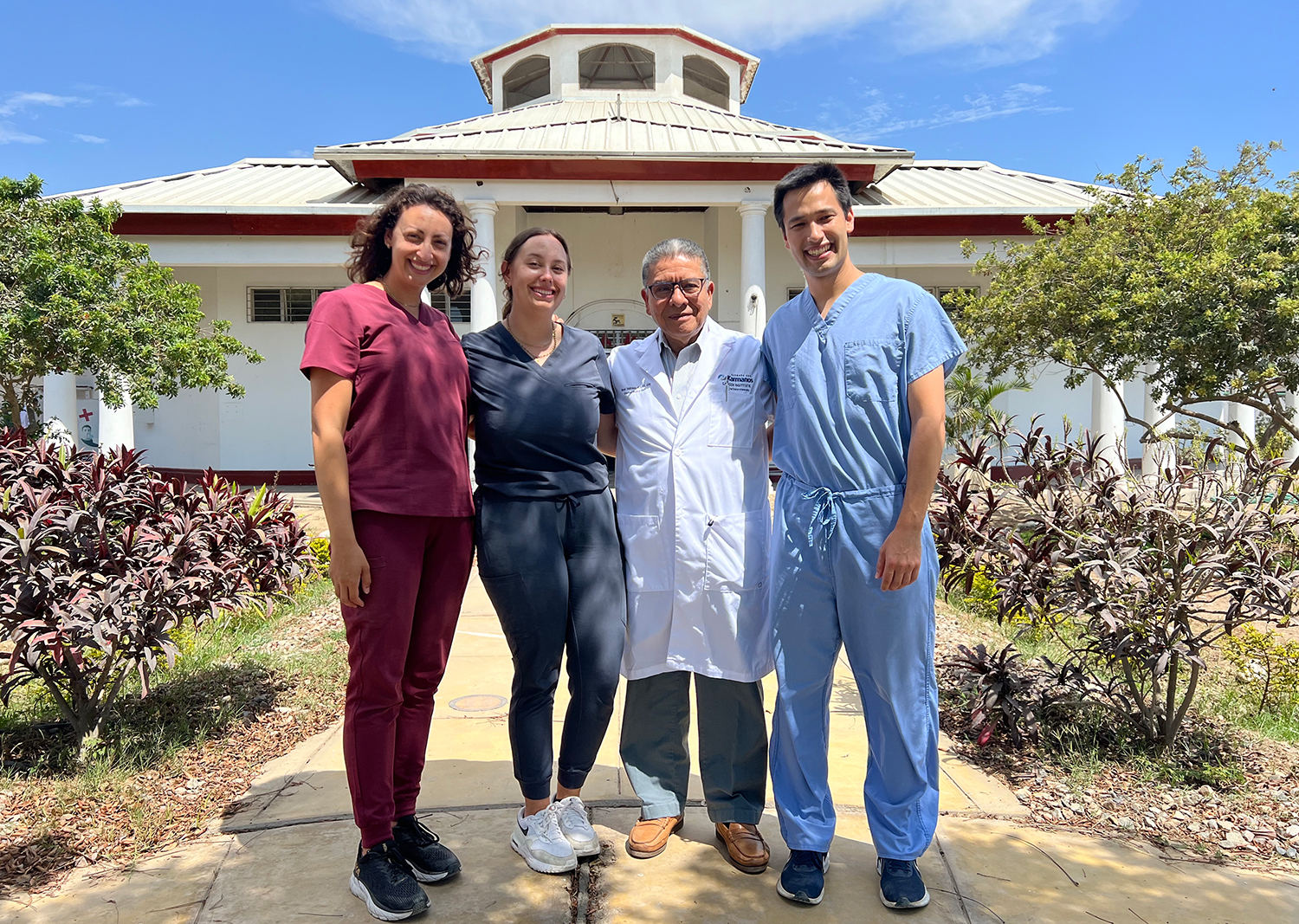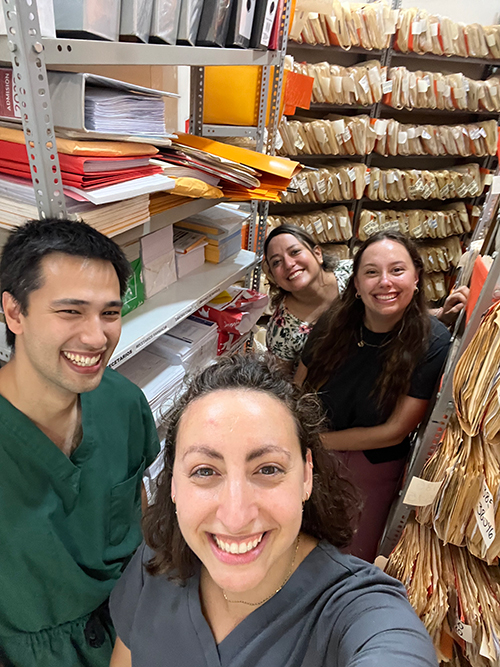
Maria Ibarra, Matthew Pun and Natalie Vela were the first UMMS students to visit the PAMS Polyclinic in Chincha, a few hundred miles south of Lima. The clinic is directed by Adjunct Professor of Internal Medicine Manuel Valdivieso, a former Medicine in Spanish instructor who volunteers and travels there regularly to oversee operations and treat patients.
“This was the first time I have been able to bring students to work directly in the clinic, which had been a long time goal,” Valdivieso said. “It was a very positive experience.”
Global REACH supported students, who, as the first UMMS visitors to Chincha, were tasked with exploring potential long-term opportunities for student engagement and writing a curriculum report that could be a resource for future visiting students.
In addition to shadowing at the clinic, an outpatient center with both general practitioners and specialists, the students partnered with clinic leaders to conduct a research project assessing the prevalence of H. Pylori, a bacteria that is linked to gastric ulcers and cancer of the stomach.

The students chart-reviewed two years of retrospective patient data, synthesizing and documenting the disease prevalence, reported symptoms, and diagnostic techniques in an effort to help the clinic’s doctors understand trends and best practices (there are multiple ways to diagnose H. Pylori).
“There is a lot of pathology that is unique to Peru, so it is a beneficial area of study,” Valdivieso said. “After this visit, I can see the possibility that a prospective project could be followed from one group to the next.”
Apart from the research and clinical shadowing with local doctors, the students also helped to facilitate a weeklong community health fair where people from the surrounding area could come for free health consultations and screens for conditions such as anemia, hypertension, and diabetes. The event was run by clinic staff as well as other visiting medical students, residents, and physicians from medical schools in Lima as part of a weeklong medical mission.
“One of the best aspects was being able to meet the physicians and students from Lima,” said Vela. “It was great to get to know them over the course of the health fair days and to compare and contrast our different experiences with medical education in our respective countries.”
The students were able to put their Spanish language skills to use by conversing with clinic patients and colleagues after practicing for years through the Medicine in Spanish elective. That program is run by the UMMS Latin American & Native American Medical Association (LANAMA). Vela is the M4 director of the program and an active participant since her first year of medical school.
“It was a great opportunity to be immersed in the language and the culture, and be able to apply our Spanish language proficiency,” she said. “Any visitors to Chincha absolutely should be highly proficient in the language to be able to get the most out of the experience and be able to contribute as much as possible.”
